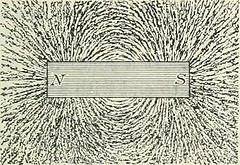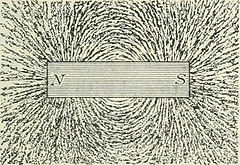Ethernet Physical Layer

Physical layers
Xerox experimental Ethernet
Name
Description
Xerox Ethernet
The original, 3 Mbit/s Ethernet implementation, which had a frame format different from the production forms of Ethernet.
Early implementations (10 Mbit/s and 1 Mbit/s)
Name
Standard
Description
10BASE5
802.3 (8)
10 Mbit/s, Manchester coded signaling, copper RG-8X (expensive) coaxial cabling, bus topology with collision detection (aka Thick Ethernet)
10BASE2
802.3 (10)
10 Mbit/s, Manchester coded signaling, copper RG-58 (cheap) coaxial cabling, bus topology with collision detection (aka Thin Ethernet)
10BROAD36
802.3 (11)
10 Mbit/s, scrambled NRZ signaling modulated (PSK) over high frequency carrier, broad bandwidth coaxial cabling, bus topology with collision detection
1BASE5
802.3 (12)
1 Mbit/s, Manchester coded signaling, copper twisted pair cabling, star topology
StarLAN 10
Proprietary
10 Mbit/s, Manchester coded signaling, copper twisted pair cabling, star topology – evolved into 10BASE-T
LattisNet UTP
Proprietary
10 Mbit/s, Manchester coded signaling, copper twisted pair cabling, star topology – evolved into 10BASE-T
10BASE-T
802.3 (14)
10 Mbit/s, Manchester coded signaling, copper twisted pair cabling, star topology – direct evolution of 1BASE-5
FOIRL
802.3 (9.9)
Fiber-optic inter-repeater link; the original standard for Ethernet over fiber
10BASE-F
802.3 (15)
— A generic term for the family of 10 Mbit/s Ethernet standards using fiber optic cable: 10BASE-FL, 10BASE-FB and 10BASE-FP. Of these only 10BASE-FL is in widespread use. 10 Mbit/s, Manchester coded signaling, fiber pair
10BASE-FL
802.3 (15&18;)
an updated version of the FOIRL standard
10BASE-FB
802.3 (15&17;)
intended for backbones connecting a number of hubs or switches; it is now obsolete
10BASE-FP
802.3 (15&16;)
a passive star network that required no repeater, it was never implemented
Fast Ethernet (100 Mbit/s)
For more details on this topic, see Fast Ethernet.
Name
Standard
Description
100BASE-T
802.3 (21)
A term for any of the four standards for 100 Mbit/s Ethernet, either over twisted pair cable up to 100 meters long or fiber (strangely enough. The terminology for the family was used because of the huge market popularity of 10BASE-T). Includes 100BASE-TX, 100BASE-FX, 100BASE-T4 and 100BASE-T2. All of them use a star topology.
100BASE-TX
802.3 (24)
4B5B MLT-3 coded signaling, CAT5 copper cabling with two twisted pairs.
100BASE-T4
802.3 (23)
8B6T PAM-3 coded signaling, CAT3 copper cabling (as used for 10BASE-T installations) with four twisted pairs (uses all four pairs in the cable). Now obsolete, as Cat-5 cabling is the norm. Limited to half-duplex.
100BASE-T2
802.3 (32)
No products exist. PAM-5 coded signaling, CAT3 copper cabling with two twisted pairs, star topology. Supports full-duplex. It is functionally equivalent to 100BASE-TX, but supports old telephone cable. However, special sophisticated digital signal processors are required to handle encoding schemes required, making this option fairly expensive at the time. It arrived well after 100BASE-TX was established in the market. the technology developed for 100BASE-T2 was the foundation for 1000BASE-T.
100BASE-FX
802.3 (24)
4B5B NRZI coded signaling, two strands of multi-mode optical fiber. Maximum length is 400 meters for half-duplex connections (to ensure collisions are detected) or 2 kilometers for full-duplex.
100BASE-SX
TIA
100 Mbit/s Ethernet over multi-mode fiber. Maximum length is 300 meters. 100BASE-SX used short wave length (850 nm) optics that was sharable with 10BASE-FL, thus making it possible to have an auto-negotiation scheme and have 10/100 fiber adapters.
100BASE-BX10
Proprietary
100 Mbit/s Ethernet bidirectionally over a single strand of single-mode optical fiber. A multiplexer is used to split transmit and receive signals into different wavelengths allowing them to share the same fiber. Supports up to 10 km.
100BASE-LX10
Proprietary
100 Mbit/s Ethernet up to 10 km over a pair of Single Mode Fibers.
100Base-VG
802.12
Standardized by a different IEEE 802 subgroup, 802.12, because it used a different, more centralized form of media access (“Demand Priority”). Championed by only HP, 100VG-AnyLAN (as was the marketing name) was the earliest in the market. It needed four pairs in a Cat-3 cable. Now obsolete (802.12 has been “inactive” since 1997) the standard has been withdrawn.
Gigabit Ethernet
For more details on this topic, see Gigabit Ethernet.
All of these use a star topology.
Name
Standard
Description
1000BASE-T
802.3 (40)
PAM-5 coded signaling, CAT5/CAT5e/CAT6 copper cabling with four twisted pairs (used in both directions)
1000BASE-TX
TIA 854
over only Cat-6 copper cabling. Unimplemented.
1000BASE-SX
802.3
8B10B NRZ coded signaling, multi-mode fiber (up to 550 m).
1000BASE-LX
802.3
8B10B NRZ coded signaling, multi-mode fiber (up to 550 m) or single-mode fiber (up to 2 km; can be optimized for longer distances, up to 10 km).
1000BASE-LH
multi-vendor
over single-mode fiber (up to 100 km). A long-haul solution.
1000BASE-CX
802.3
8B10B NRZ coded signaling, balanced shielded twisted pair (up to 25 m) over special copper cable. Predates 1000BASE-T and rarely used.
1000BASE-BX10
802.3
up to 10 km. Bidirectional over single strand of single-mode fibre.
1000BASE-LX10
802.3
Up to 10 km over a pair of single-mode fibres.
1000BASE-PX10-D
802.3
downstream (from head-end to tail-ends) over single-mode fiber using point-to-multipoint topology (supports at least 10 km).
1000BASE-PX10-U
802.3
upstream (from a tail-end to the head-end) over single-mode fiber using point-to-multipoint topology (supports at least 10 km).
1000BASE-PX20-D
802.3
downstream (from head-end to tail-ends) over single-mode fiber using point-to-multipoint topology (supports at least 20 km).
1000BASE-PX20-U
802.3
upstream (from a tail-end to the head-end) over single-mode fiber using point-to-multipoint topology (supports at least 20 km).
1000BASE-ZX
Unknown
Up to 100 km over single-mode fibre.
1000BASE-KX
802.3ap
1 m over backplane
10 Gigabit Ethernet
For more details on this topic, see 10 Gigabit Ethernet.
Name
Standard
Description
10GBASE-SR
802.3ae
designed to support short distances over deployed multi-mode fiber cabling, it has a range of between 26 m and 82 m depending on cable type. It also supports 300 m operation over a new 2000 MHz.km multi-mode fiber.
10GBASE-LX4
802.3ae
uses wavelength division multiplexing to support ranges of between 240 m and 300 m over deployed multi-mode cabling. Also supports 10 km over single-mode fiber.
10GBASE-LR
802.3ae
supports 10 km over single-mode fiber
10GBASE-ER
802.3ae
supports 40 km over single-mode fiber
10GBASE-SW
802.3ae
A variation of 10GBASE-SR using the WAN PHY, designed to interoperate with OC-192 / STM-64 SONET/SDH equipment
10GBASE-LW
802.3ae
A variation of 10GBASE-LR using the WAN PHY, designed to interoperate with OC-192 / STM-64 SONET/SDH equipment
10GBASE-EW
802.3ae
A variation of 10GBASE-ER using the WAN PHY, designed to interoperate with OC-192 / STM-64 SONET/SDH equipment
10GBASE-CX4
802.3ak
designed to support short distances over copper cabling, it uses InfiniBand 4x connectors and CX4 cabling and allows a cable length of up to 15 m.
10GBASE-T
802.3an
Uses unshielded twisted-pair wiring.
10GBASE-LRM
802.3aq
Extend to 220 m over deployed 500 MHz.km multimode fiber
10GBASE-KX4
802.3ap
1 m over 4 lanes of backplane
10GBASE-KR
802.3ap
1 m over a single lane of backplane
10 gigabit Ethernet is still fairly new and it remains to be seen which of the standards will gain commercial acceptance in consumer markets. 10GBASE-LR/ER are the most common usage in the Carrier/ISP market.
Note that both IEEE 802.2ae and IEEE 802.3ak have been incorporated into IEEE 802.3-2008.
40 Gigabit Ethernet
For more details on this topic, see 100 Gigabit Ethernet.
This is the future version of Ethernet and is not expected to be standardized until 2010. This is the proposed nomenclature:
Name
Standard
Description
40GBASE-SR4
802.3ba
100 m operation over a new 2000 MHz.km multi-mode fiber.
40GBASE-LR4
802.3ba
10 km operation over single-mode fiber.
40GBASE-CR4
802.3ba
10 m operation copper cable assembly.
40GBASE-KR4
802.3ba
1 m operation over backplane.
100 Gigabit Ethernet
For more details on this topic, see 100 Gigabit Ethernet.
This is the future version of Ethernet and is not expected to be standardized until 2010. This is the proposed nomenclature:
Name
Standard
Description
100GBASE-SR10
802.3ba
100 m operation over a new 2000 MHz.km multi-mode fiber.
100GBASE-LR4
802.3ba
10 km operation over single-mode fiber.
100GBASE-ER4
802.3ba
40 km operation over single-mode fiber.
100GBASE-CR10
802.3ba
10 m operation copper cable assembly.
Ethernet over twisted-pair cable
Main article: Ethernet over twisted pair
Several varieties of Ethernet were specifically designed to run over 4-pair copper structured cabling already installed in many locations. ANSI recommends using Category 6 cable for new installations[citation needed].
RJ-45 Wiring (TIA/EIA-568-B T568A)
Pin
Pair
Color
telephone
10BASE-T
100BASE-TX
1000BASE-T
PoE mode A
PoE mode B
1
3
white/green
–
TX+
z
bidi
48V out
–
2
3
green
–
TX-
z
bidi
48V out
–
3
2
white/orange
–
RX+
z
bidi
48V return
–
4
1
blue
ring
–
–
bidi
–
48V out
5
1
white/blue
tip
–
–
bidi
–
48V out
6
2
orange
–
RX-
z
bidi
48V return
–
7
4
white/brown
–
–
–
bidi
–
48V return
8
4
brown
–
–
–
bidi
–
48V return
Combining 10Base-T (or 100BASE-TX) with “IEEE 802.3af mode A” allows a hub to transmit both power and data over only two pairs. This was designed to leave the other two pairs free for analog telephone signals[citation needed].
The pins used in “IEEE 802.3af Mode B” supplies power over the “spare” pairs not used by 10BASE-T and 100BASE-TX.
In a departure from both 10BASE-T and 100BASE-TX, 1000BASE-T uses all four cable pairs for simultaneous transmission in both directions through the use of echo cancellation. (Dial-up modems also use echo cancellation to simultaneously transmit data in both directions over a single cable pair).
Ethernet minimum cable lengths
All copper Ethernet segments that run the Collision Detect (CD) portion of CSMA/CD have a minimum cable length to function properly because of reflections. This applies only to 10BASE-T and 100BASE-TX standards; The 1000BASE-TX standard is covered at the end of this section.
Fiber connections have minimum cable lengths due to level requirements on received signals.
Fiber ports designed for long-haul wavelengths require a signal attenuator if used within a building.
Industrial Ethernet applications use a star topology with no collisions so that no minimum cable length is required.
1000BASE-TX supports half-duplex mode, making collisions possible. Consequently, the 1000BASE-TX standard requires a minimum cable length for collision detection to function properly; to avoid this in Gigabit Ethernet, small frames are padded into the transmission in half-duplex mode.
See also
Ethernet
Physical layer
IEEE 802.3
References
^ Cisco Gigabit Ethernet Solutions for Cisco 7×00 Series Routers, undated, URL retrieved on 17 February 2008
^ see page 8 for proposed nomenclature
^ Cisco 100BASE-FX SFP Fast Ethernet Interface Converter on Gigabit SFP Ports, undated, URL retrieved on 1 June 2007
^ Intel Network Connectivity Solutions Guide, undated, URL retrieved on 1 June 2007
External links
Get IEEE 802.3
IEEE 802.3
How to make an Ethernet cable
Categories: Physical layer protocols | EthernetHidden categories: Articles needing cleanup from December 2006 | All pages needing cleanup | All articles with unsourced statements | Articles with unsourced statements from February 2007
I am China Manufacturers writer, reports some information about tanning canopy , garden potting bench.
Find More Physics Articles
